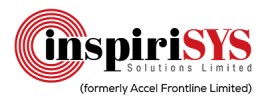Filter interviews by
Muziris Softech Interview Questions, Process, and Tips
Muziris Softech Interview Experiences
3 interviews found
I applied via Walk-in and was interviewed before Aug 2022. There were 4 interview rounds.

(3 Questions)
- Q1. What is RDBMS What is difference between delete and truncate What is normalisation Different types of join Oops concepts
- Ans.
RDBMS stands for Relational Database Management System. It is a type of database management system that stores data in a structured format.
RDBMS is used to manage relational databases, where data is stored in tables with rows and columns.
Examples of RDBMS include MySQL, Oracle, SQL Server, and PostgreSQL.
RDBMS uses SQL (Structured Query Language) for querying and managing data.
It ensures data integrity through relation...
- Q2. What are the Benefits of sql
- Ans.
SQL provides benefits such as data retrieval, data manipulation, data security, and data consistency.
Efficient data retrieval: SQL allows for quick and easy retrieval of specific data from databases.
Data manipulation: SQL enables users to update, insert, and delete data in databases.
Data security: SQL provides features like user authentication and access control to ensure data security.
Data consistency: SQL helps maint...
- Q3. What is concurrent transaction
- Ans.
Concurrent transactions are multiple transactions that are executed simultaneously in a database system.
Concurrent transactions can lead to issues like data inconsistency and conflicts.
Database systems use techniques like locking and timestamping to manage concurrent transactions.
For example, if two users try to update the same record at the same time, conflicts may arise.
(1 Question)
- Q1. Strength and weakness Company products or client
(1 Question)
- Q1. How many time for travel Hostel or stay in home Any friends here From where job applied
Interview Preparation Tips
Skills evaluated in this interview
ASP.NET Programmer Interview Questions asked at other Companies
Three questions regarding output prediction.
(3 Questions)
- Q1. What is difference between abstract class and interface?
- Ans.
Abstract class can have both abstract and non-abstract methods, while interface can only have abstract methods.
Abstract class can have constructors, fields, and methods, while interface cannot have any of these.
A class can implement multiple interfaces but can only inherit from one abstract class.
Abstract classes are used to define a common behavior for subclasses, while interfaces are used to define a contract for cla...
- Q2. What is wrapper class in java ?
- Ans.
A wrapper class in Java is a class that wraps around a primitive data type and provides additional methods and functionalities.
Wrapper classes are used to convert primitive data types into objects.
They provide methods to access the value of the wrapped primitive type.
Examples include Integer, Double, Boolean, etc.
- Q3. Explain oops concept in java?
- Ans.
OOP in Java is a programming paradigm based on the concept of objects, which can contain data in the form of fields and code in the form of procedures.
OOP focuses on creating objects that interact with each other to solve problems.
Encapsulation: Objects bundle data and methods that operate on the data together.
Inheritance: Classes can inherit attributes and methods from other classes.
Polymorphism: Objects can take on d...
Skills evaluated in this interview
Intern Interview Questions asked at other Companies
I applied via LinkedIn
Interview Questionnaire
3 Questions
- Q1. Basic asp. Net
- Q2. Sql joins
- Q3. Sql normalisation
Interview Preparation Tips
Friendly talk..
2 to 3 weeks for getting results
Program Analyst Interview Questions asked at other Companies
Top trending discussions






Interview questions from similar companies

Interview Questionnaire
1 Question
- Q1. Difference between for and for each
- Ans.
For loop is used for iterating over a range of values while for each loop is used for iterating over elements of an array.
For loop is used when the number of iterations is known beforehand.
For each loop is used when the number of iterations is not known beforehand.
For loop can be used with any iterable object.
For each loop can only be used with arrays and other iterable objects.
For loop uses an index variable to access...

Interview Questionnaire
1 Question
- Q1. SDLC Model
Interview Preparation Tips

I appeared for an interview before Jun 2016.
Interview Questionnaire
1 Question
- Q1. Java related questions on Oops concept and Multithreading
Interview Preparation Tips
Experience: Simple aptitude and reasoning questions little java based programming
Tips: Basic programming knowledge and good aptitude
Duration: 1 hour
Total Questions: 60
Round: Technical Interview
Experience: Normal questions on Java, basic programming questions like reverse no. , String related and logical coding
Tips: What u mentioned on your resume go through that only, they will not ask apart from your resume
Skills: How Well You Are Able To Communicate What You Wanted To Tell, Programming
College Name: SRCEM

I appeared for an interview before Aug 2016.
Interview Preparation Tips
Experience: I am vinothkumar from Dindugal, I was studied computer engineering in Madurai institute of engineering and technology at sivagangai, I am quality controller in RR DONNELLY at Chennai, my experience 2 years, my family staying in native, my father palanichami he is a former, my mother tamilselvi she is home maker and my one yelder brother Vijayakumar he is driver, I am interested area software engineer, my hobbies are listening music, reading book and news paper, playing and watching cricket
Tips: No comments
Round: Test
Experience: I am vinothkumar from Dindugal, I was studied computer engineering in Madurai institute of engineering and technology at sivagangai, I am quality controller in RR DONNELLY at Chennai, my experience 2 years, my family staying in native, my father palanichami he is a former, my mother tamilselvi she is home maker and my one yelder brother Vijayakumar he is driver, I am interested area software engineer, my hobbies are listening music, reading book and news paper, playing and watching cricket
Tips: No comments
Total Questions: 15
Round: Test
Experience: See my mentality
Tips: No comments
Duration: 45 minutes
Round: Group Discussion
Experience: Communication
Tips: No comments
Skills: Communication And Confidence

I applied via Company Website and was interviewed before Dec 2019. There were 3 interview rounds.
Interview Questionnaire
1 Question
- Q1. Regarding OOPS, wordpress and laravel.
Interview Preparation Tips

I applied via Naukri.com and was interviewed in Sep 2020. There were 3 interview rounds.
Interview Questionnaire
5 Questions
- Q1. Which collection class is used to represent key-value pairs?
- Ans.
The HashMap class is used to represent key-value pairs in Java.
HashMap is a part of the Java Collections Framework.
It allows null values and only one null key.
It provides constant-time performance for basic operations like get and put.
Example: HashMap<String, Integer> map = new HashMap<>();
- Q2. What is abstraction?
- Ans.
Abstraction is the process of simplifying complex systems by focusing on essential details and hiding unnecessary complexities.
Abstraction allows us to create models or representations of real-world objects or systems in software.
It helps in managing complexity by breaking down a system into smaller, more manageable parts.
Abstraction provides a level of indirection, allowing changes to be made in one part of the system...
- Q3. Why is try-catch used in JAVA?
- Ans.
try-catch is used in Java to handle exceptions and prevent program crashes.
try-catch blocks are used to catch and handle exceptions that may occur during program execution.
It allows the program to gracefully handle errors and prevent the program from crashing.
The try block contains the code that may throw an exception, and the catch block handles the exception.
Multiple catch blocks can be used to handle different types...
- Q4. Which statement will we use if we want to select a statement based on integer inputs?
- Ans.
The statement to use for selecting based on integer inputs is the 'switch' statement.
The 'switch' statement allows for multiple cases to be evaluated based on the value of an integer input.
Each case represents a possible value of the input, and the corresponding code block is executed if the value matches.
The 'switch' statement also provides a 'default' case which is executed if none of the cases match the input value.
...
- Q5. Explain your project.
Interview Preparation Tips
Prepare a good project
Skills evaluated in this interview

I applied via Campus Placement and was interviewed in Oct 2020. There was 1 interview round.
Interview Questionnaire
4 Questions
- Q1. Tell me about yourself
- Q2. Why IT
- Q3. About my project
- Q4. Few mechanical questions
Interview Preparation Tips
Muziris Softech Interview FAQs
Tell us how to improve this page.
Interview Questions for Popular Designations
Muziris Softech Interview Process
based on 5 interviews
Interview experience
Interview Questions from Similar Companies
Muziris Softech Reviews and Ratings
based on 30 reviews
Rating in categories
|
Software Programmer
22
salaries
| ₹2 L/yr - ₹3.8 L/yr |
|
Programmer
15
salaries
| ₹2.4 L/yr - ₹3.5 L/yr |
|
QA Engineer
8
salaries
| ₹1.8 L/yr - ₹2.7 L/yr |
|
Associate Business Consultant
7
salaries
| ₹2.5 L/yr - ₹3.8 L/yr |
|
Business Consultant
7
salaries
| ₹3.4 L/yr - ₹4.2 L/yr |

HCL Infosystems

Accel Frontline

Northcorp Software

Diverse Lynx
- Home >
- Interviews >
- Muziris Softech Interview Questions












